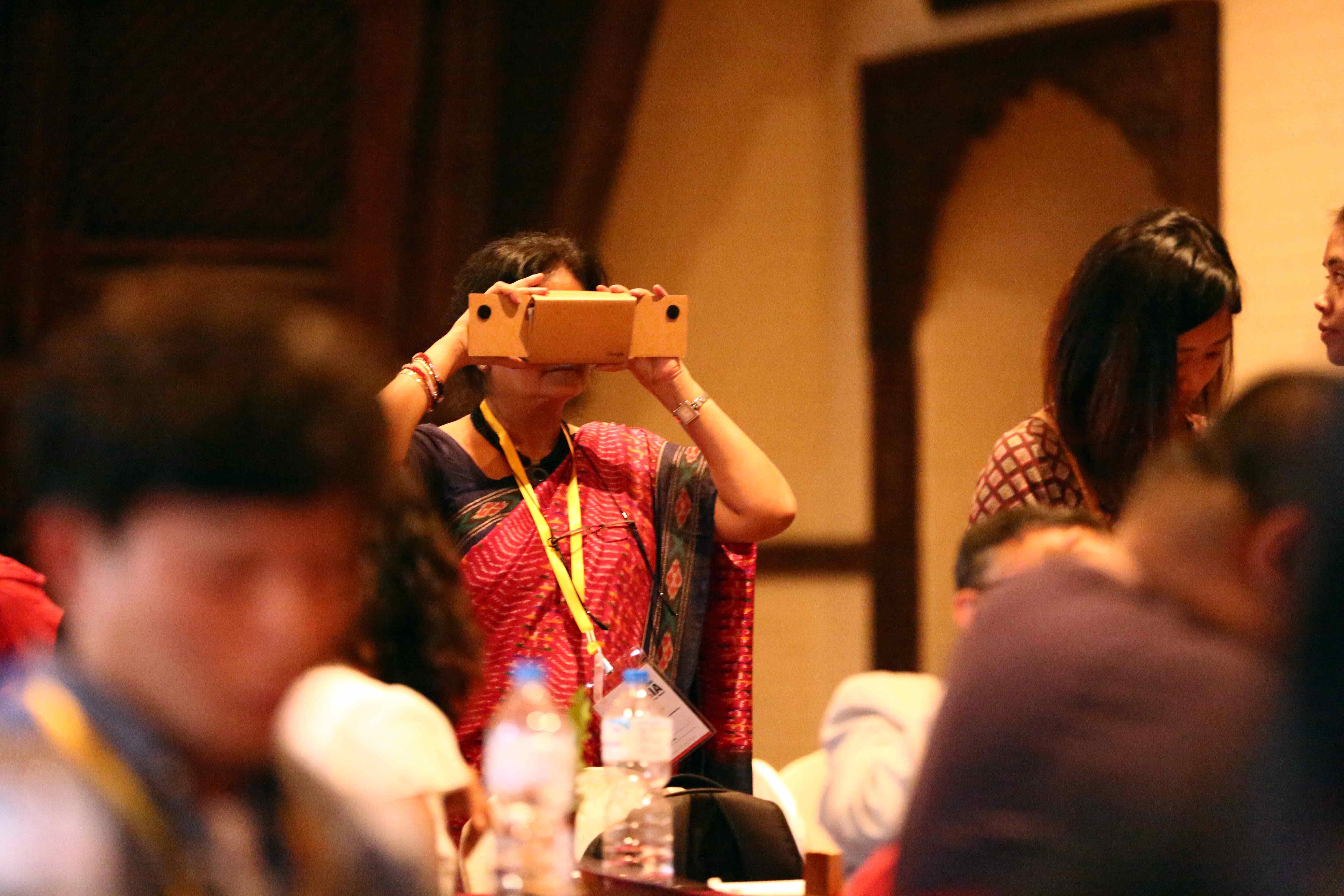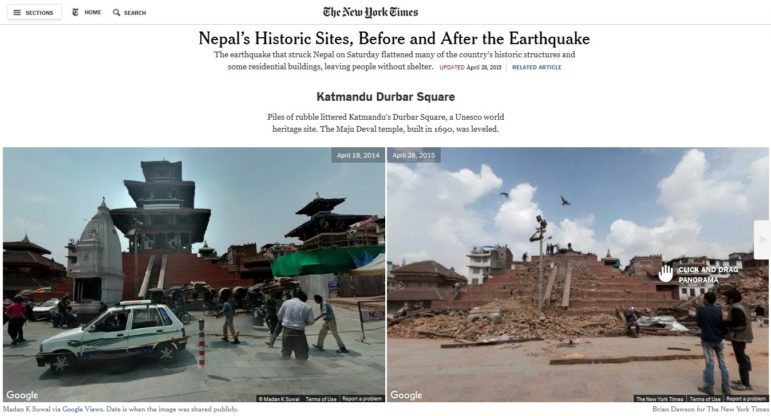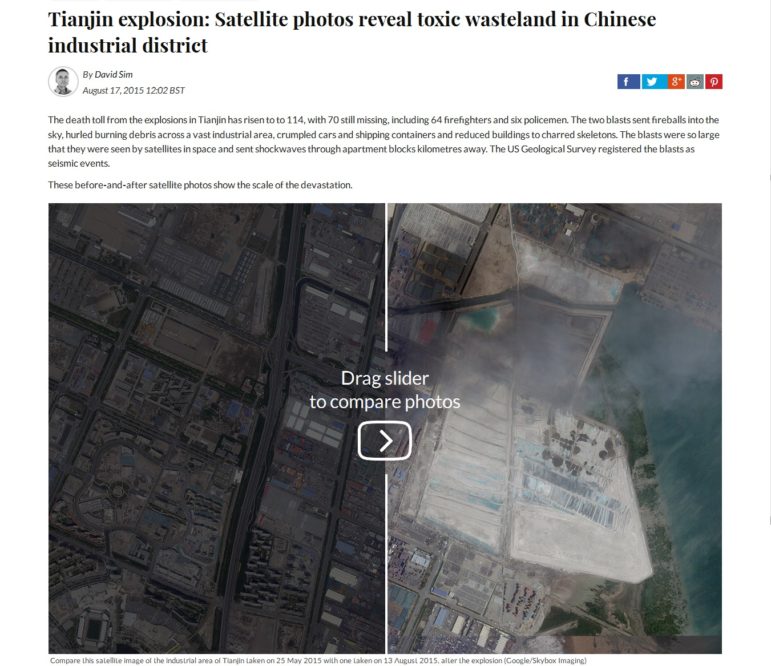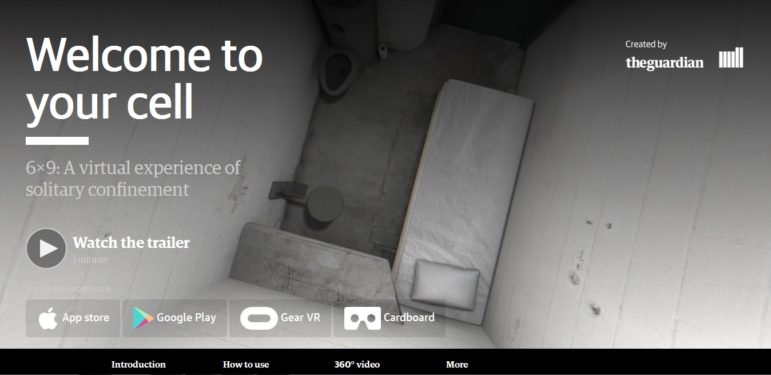
A conference attendee uses Google Cardboard in a virtual reality workshop at Uncovering Asia 2016. Photo by Milan Poudel.
Virtual reality tools are pushing the frontiers of storytelling, with potential to quite literally immerse the audience into the story.
The nascent technology is already being leveraged by some newsrooms around the world, including The Guardian’s exploration of psychological damage caused by solitary confinement, The New York Times reportage of Nepal’s earthquake, and The International Business Times story on the Tianjin explosion.
But while enthusiasts see endless potential, current application is limited. “At the moment I don’t think it is practical yet because to consume the production, users need a viewer. In the future, it is an ability to tell stories differently,” said GMA News and Public Affairs filmmaker Joseph Israel Laban at the Uncovering Asia 2016 conference in Nepal.
Event sponsor Google News Lab treated muckrakers to an immersive virtual reality experience on the last day of the conference, as Google News Lab India media specialist Surabhi Malik demonstrated new tools. Qiu Jiaqiu, director of China’s Caixin Video, showed the potential of using virtual reality technology for documentary storytelling with two productions: “A Kindergarten in A Mountain Village” and “The Factories of the Future.”
The application of immersion technology is not without drawbacks. Wei Ming, data journalism project assistant from Hong Kong Baptist University, expressed hope that further development will allow users to view virtual reality projects for longer periods of time without having motion sickness.
As developers continue to explore what’s possible, some tools are already available to newsrooms.
Historical Street View
Last year, a 7.8 magnitude earthquake hit Nepal and flattened many historic structures and buildings. The New York Times utilized Google’s historical street view to put together a before and after comparison of the destruction of major sites in Nepal.
 This feature can be used in news stories to show the contrast of a location before and after an event, or the process of construction for iconic buildings.
This feature can be used in news stories to show the contrast of a location before and after an event, or the process of construction for iconic buildings.
Satellite and Terrain Images
In August 2015, a series of explosions at a container storage station at the Port of Tianjin, Taiwan, sent fireballs and huge wafts of black smoke into the air. The International Business Times showed the extent of devastation using Google satellite images.
 It takes time for reporters and photographers to get to the scene, so organizations are increasingly utilizing Google’s satellite and terrain images to show the immediate impact of an event. Malik said Google uploads fresh satellite imagery in the event of breaking news, and organizations can access updates of new images here.
It takes time for reporters and photographers to get to the scene, so organizations are increasingly utilizing Google’s satellite and terrain images to show the immediate impact of an event. Malik said Google uploads fresh satellite imagery in the event of breaking news, and organizations can access updates of new images here.
360 Degree Photos/Videos
In the papers’s first creation of a virtual reality experience, The Guardian let readers feel what it’s like to be in solitary confinement, in a cell measuring 6×9 feet, by using a 360 Degree video.
 360 Degree photos and videos can be used to take the audience on the journey as the event unfolds, immersing them into the action.
360 Degree photos and videos can be used to take the audience on the journey as the event unfolds, immersing them into the action.
Story Spheres
Story Spheres allows the creator to infuse text, dialogue, sound effects and a (rights-cleared) music track into panoramic photographs.
Google Earth Pro
Aside from top view satellite images, Google Earth Pro lets users create 3D fly-through tours of anywhere in the world and the animations can be exported in high definition for use by newsrooms. Here are more examples of what can be done with the technology:
Equipment
To capture 360 degree photos or videos, users need a compatible smartphone with a built-in camera and Google Street View and Google Cardboard Camera applications installed.
For production of images and videos with professional resolutions, a range of cameras can be used, including Ricoh Theta S and the NCTech iris360. Additional tools are listed here.
Google Cardboard
A cardboard viewer is necessary to view virtual reality videos, which can be purchased or built from scratch.
Google has a list of tutorials for its tools and provides support through newslabsupport@google.com.
 Eunice Au is GIJN’s program assistant. She was previously a journalist in Malaysia for eight years and has written on a range of topics, including politics, crime, environment, terrorism, and entertainment. From 2011 to 2015, she worked for the New Straits Times. Her last position before joining GIJN was as Malaysia correspondent for Singapore’s The Straits Times.
Eunice Au is GIJN’s program assistant. She was previously a journalist in Malaysia for eight years and has written on a range of topics, including politics, crime, environment, terrorism, and entertainment. From 2011 to 2015, she worked for the New Straits Times. Her last position before joining GIJN was as Malaysia correspondent for Singapore’s The Straits Times.
